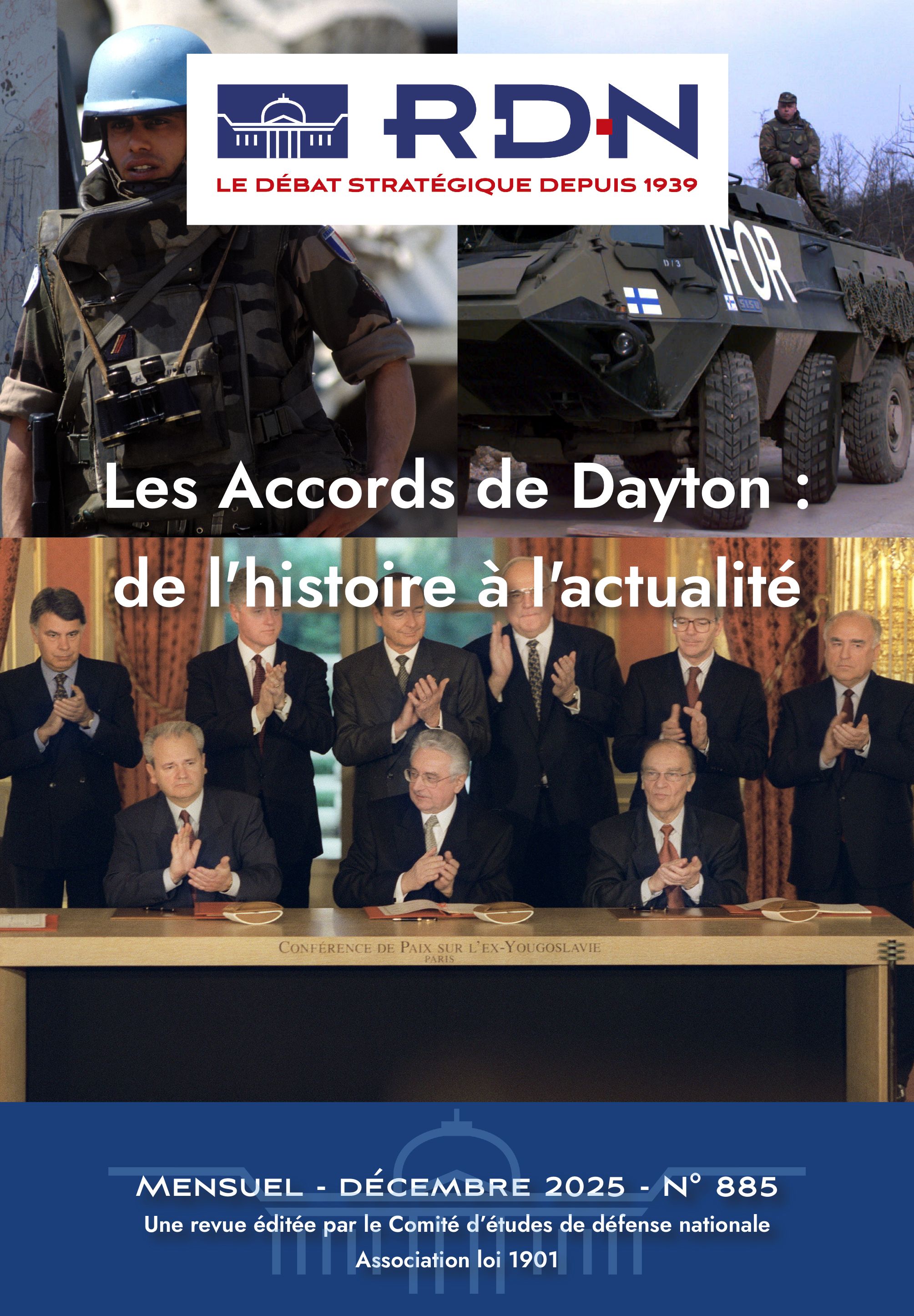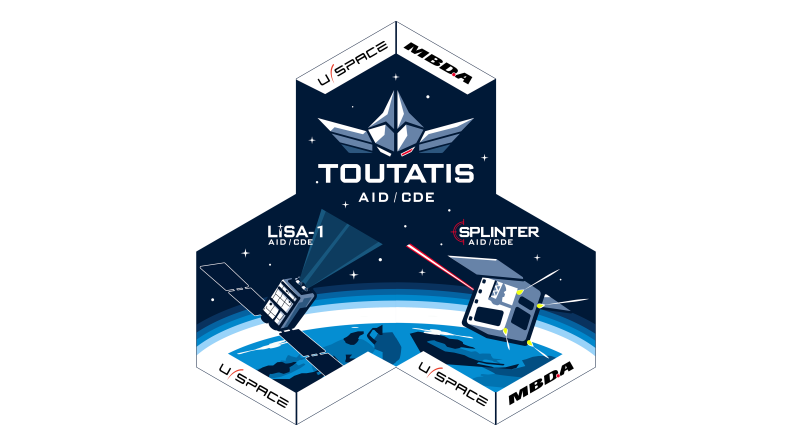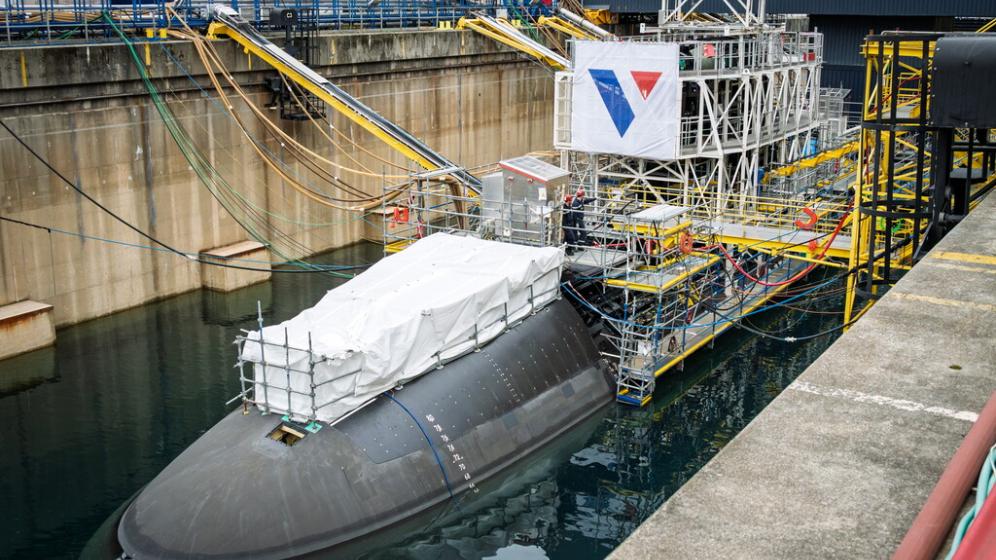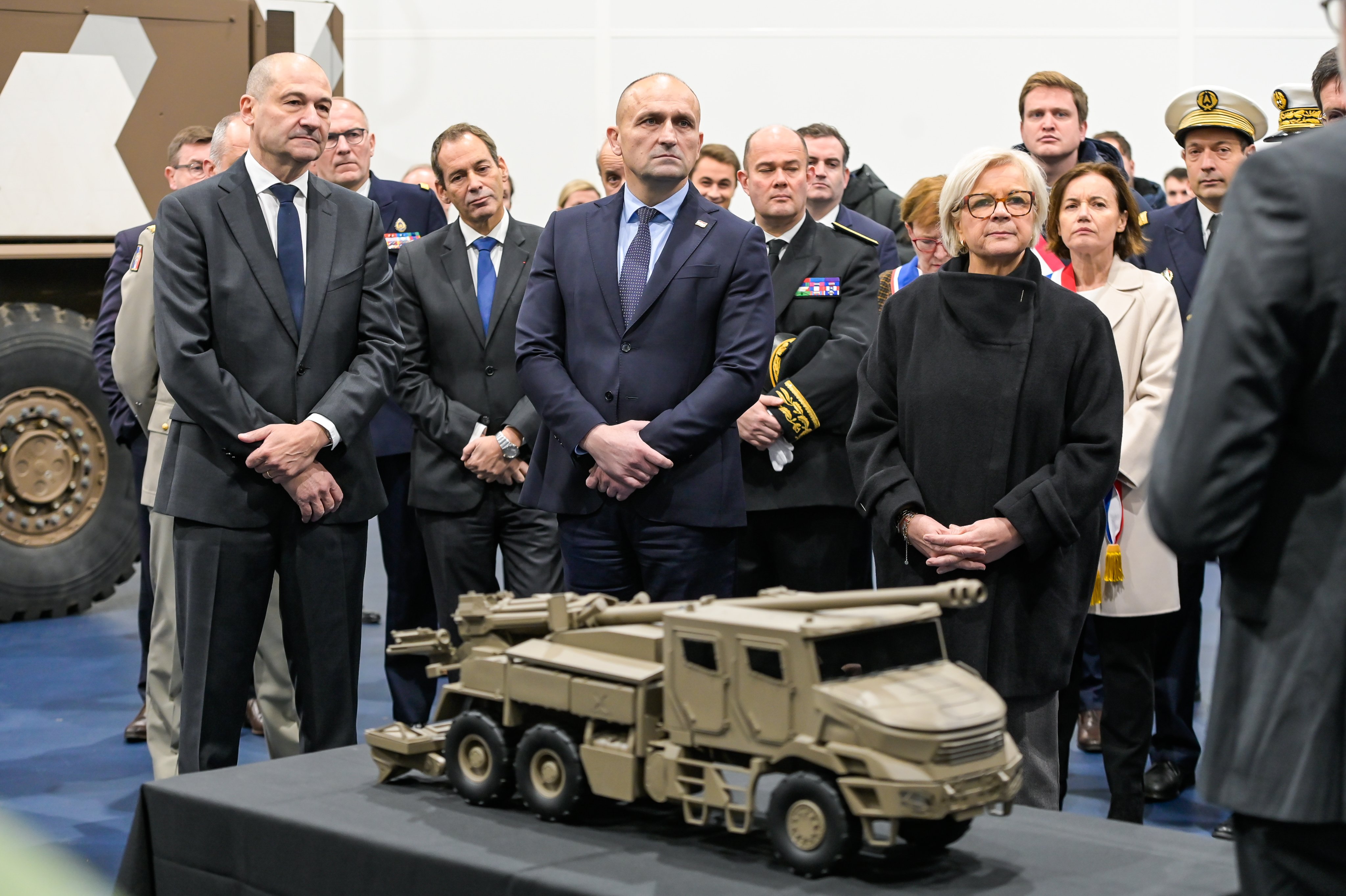The appearance of anti access and access denial in French strategic debate has brought with it a number of myths which need to be dispelled in order to understand better this concept that has numerous implications for France, a country whose expeditionary capability is unique in Europe.
Five Myths About the Anti-Access/Area Denial Threat
In just a few years, concerns about “anti-access” and “area denial” capabilities (A2/AD) have erupted into French-speaking strategic debate. The concept of “anti-access” strategy first appeared in the United States in the decade following Operation Desert Storm in Iraq in 1991 and was soon bracketed together with that of area denial. Whereas an anti-access strategy aims at constraining the ability of projected forces to penetrate a theatre of operations, area denial aims at limiting the freedom of action of such forces once they are present in the theatre. Although the two issues can be distinguished in conceptual, capability or operational terms, both come down to a single concern: states in growing numbers are currently looking to constrain the freedom of action of expeditionary powers in distant theatres.
Over the past two decades the development and diffusion of air-, sea-, ground- and space-based interdiction capabilities have given form to this strategy. Surface-to-air and anti-ship systems, underwater mines, surface-to-surface cruise and ballistic missiles, electronic warfare capabilities and other anti-satellite assets are part of the options available to those who wish to hinder expeditionary powers. In that sense, the strengthening of A2/AD capabilities is a reflection of the progress that miniaturisation of electronics has led in the field of conventional weaponry, in turn opening up an era in which major powers have lost the monopoly of long-range, precision-guided, conventional strike capabilities.
The French 2017 Defense and National Security Strategic Review and the military programming law covering the years 2019-2025 both identified A2/AD as a threat to France, and the number of studies dedicated to this problem has increased significantly in recent years in parallel with renewed strategic competition between the major powers in the Baltic, the South China Sea and the Eastern Mediterranean.(1) Despite this growing attention, a number of myths and misunderstandings of the problem posed by A2/AD have remained. This article looks at five of those myths in order to encourage even deeper debate about a threat that will weigh upon our defence strategy for a long time to come.
A2/AD is yet another American obsession which should not worry France
The US strategic community produces numerous concepts whose pertinence to France sometimes appears somewhat relative. Several factors can explain this tendency. First, the US strategic community relies on permanent renewal of concepts while the French system is notable for its continuity in principles over years. Second, many US concepts are both tainted by a highly technology-centred strategic culture and regularly used by Washington as a medium of influence over its allies—within NATO in particular, where US military concepts often lead to the identification of new requirements that only the acquisition of US equipment can meet. For those reasons they are often met with scepticism by the French defence community. Third, and finally, the problems of a military superpower permanently acting on a global scale unsurprisingly differ from those facing France, whose responsibilities and assets are far more limited. The increasing centrality of A2/AD in transatlantic discussion is a perfect reflection of some of these tendencies. And yet it would be wrong to infer from all of this that the increasing dissemination of interdiction capabilities should not concern France or Europe.
While the threat posed by A2/AD appeared as a US-focused preoccupation, it should matter to all military powers concerned by their future external freedom of military action. Numerous countries in the world—most, in fact—are not expeditionary military powers and focus their defence strategies towards the protection of their own territory. Conversely, a limited number of states have chosen to develop and maintain capabilities for intervention in distant theatres of operation. France has multiple interests abroad (such as allies and friends, nationals living overseas, or strategic supply routes) and thus, like the United States, United Kingdom, Russia and, more recently, China, is one of those states which have invested heavily in order to be in a position to deploy military forces overseas independently and on short notice, even in contested environments(2). It is one of the rare European countries that have the ability to conduct initial entry operations and as a consequence would see its security severely degraded if stronger sea and air interdiction capabilities led to a sharp increase in the risks and costs of its military actions. France has to be concerned by the growth of A2/AD capabilities, all the more so since its force structure and numbers have been pared down time and time again to the minimum, meaning that they can no longer respond to the challenges posed by this type of threat by relying on superior numbers.
A2/AD capabilities can create impenetrable areas
An A2/AD strategy relies on a number of weapon systems developed since the 1980s, whose increasing range and accuracy offer an ability to create havoc over areas of unprecedented dimensions. Yet how is it possible to assess the extent of the threat that such systems pose to expeditionary forces? The default method has been to assume perfect systems effectiveness and to estimate the size of the threat envelope by taking the maximum theoretical range of their missiles (surface-to-air, anti-ship or surface-to-surface) as the basic reference datum. Measured in that way, the area covered by the Russian S-400 surface-to-air system would extend up to 400 km (250 miles) from the borders of any possessor country—in other terms, to the maximum theoretical range of a missile that could be fired by that system. Once the same logic is applied to all types of anti-ship and surface-to-surface missiles, extremely vast areas appear impenetrable, an impression enhanced by the way chosen to represent these areas graphically in the form of range circles with clearly-defined limits.
This representation of the A2/AD threat distorts perceptions in multiple ways. First of all, in real operational conditions, a missile of any type will only rarely be in a position to strike a target at its maximum range(3), and in any case cannot be deployed very close to a border without being itself exposed to counter-strikes. Moreover, although reconnaissance and surveillance capabilities have benefitted from major advances over the past thirty years they still do not render the maritime and air approaches to any territory transparent. Mobile targets remain difficult to track in real time, and radar beams are constrained by geography and can be countered by electronic warfare assets.
Consequently, even if deploying A2/AD systems allows the creation of contested areas, the latter are not homogeneous in space or time, nor are they impenetrable. The threat level can indeed be very high in the immediate proximity of an adversary’s territory, but it will decrease with distance and will remain limited by the geography of the theatre and the frequently constrained availability of costly, and therefore few in number, long-range systems.
Entering an area protected by A2/AD assets is not impossible in absolute terms, but implies taking risks, which will be more or less acceptable depending on the circumstances. Whether or not an expeditionary force can penetrate an A2/AD defensive posture is therefore a function not only of the geography and balance of forces but also, and perhaps especially, of the importance of the stakes for each both the defender and the attacker. Certainly even a weak anti-access posture could contribute to discourage political decision-makers from initiating operations if the interests are deemed too limited. On the other hand, were the major—even more so the vital—interests of France to be threatened, the stakes involved would justify accepting the risks and losses that go together with operations in heavily contested environments, whether the task is the suppression of enemy air defences, the destruction of adversary’s long-range reconnaissance and strike capabilities or, in extreme circumstances, to conduct a nuclear strike.
A2/AD is a radical departure from the art of warfare/A2/AD has always existed
Two extremes need to be avoided when studying the consequences of the emergence of A2/AD strategies and capabilities: one is to see it as a fundamental break with the art of warfare, the other is to deny A2/AD any form of novelty and importance. Either type of extreme judgment would be dangerous: one would lead us to mobilise too much attention and too many resources in responding to a challenge that represents only a part of the range of future threats; the other would lead us to neglect a structural trend likely to have a considerable effect on our external freedom of action.
It is quite clear that there are aspects of continuity between the A2/AD threat and past military experiences, and in the long term sources of continuity probably outweigh the sources of novelty. Some environments have always been more contested than others—ground terrain to start with. Does that mean A2/AD is simply one more step in the never-ending struggle between the sword and the shield and, more generally, the offense-defense balance? Whilst the metaphor illuminates a part of the problem, it does not take into account the non-technological dimensions of the problem and hence its true extent. A2/AD has become a concern shared by both France and the United States not only because technological developments could open up again a new era marked by the superiority of the defensive form of warfare, but most importantly because the combined effects of the wider dissemination of advanced weapon systems and a change in the balance of power on a global scale could affect more than just our capabilities at the tactical level: this new reality will weigh also on the strategic level, on our decisions to resort to armed force to protect interests abroad. After thirty years of foreign military interventions that were only so frequent because of the technological and operational superiority the West enjoyed over its adversaries, we cannot assume that even a marginal loss in our external freedom of action would be without incidence on how we conduct our foreign policy and protect our interests.
Conversely, the emergence of A2/AD is not revolutionary in itself. Beyond even ground warfare, having one’s freedom of action challenged is not new and has clearly been the norm over the past centuries. The ever-reducing number of symmetrical conventional conflicts from the mid-1970s, and the weakness of the adversaries against which Western expeditionary powers operated from 1990 to date, distorted perceptions by allowing pundits to believe that it was normal to use force without any risk of significant losses. The reality is that, on the scale of past centuries, the post-Cold War era constitutes an exceptional period during which the external freedom of action of a small number of states was both undisputed and hard to challenge. A2/AD is therefore less a revolution in the art of warfare than a return to a norm we had forgotten. This is not without consequences when preparing for the future: while modern capabilities pose, due to their range and precision, a number of hitherto unseen challenges, some militaries are not starting from scratch to counter them and as a matter of fact the generation of officers who currently hold the most senior positions began their careers by preparing for major conventional war in Central Europe. Innovation to counter A2/AD implies designing systems, organisations and operational concepts that will allow us to stay ahead of the adversary in both current and future technological and socio-political conditions yet at the same time re-learning lessons from the past. Renewed great power rivalry and the wide availability of precision-strike technologies should encourage us to re-examine loss rates and the dynamics of high-intensity combat during the wars in Vietnam and the Falklands, as well as those between Israel and its neighbours.
Anti access is a natural monopoly of our potential adversaries
The countries most often cited as incarnating the threat posed by A2/AD capabilities and strategy are China, Russia and, to a lesser extent, Iran and North Korea. Yet are the United States and its NATO allies really incapable of setting up a similar strategy of regional interdiction? It is a fact that the capabilities associated with A2/AD strategies have been developed in response to the West’s highly visible superiority in the air and naval environments so feared in Moscow in the second half of the Cold War. Setting aside the peculiarities of each conflict, the 1991 Gulf War and air operations in the Balkans in 1995 (Deliberate Force) and 1999 (Allied Force) and during operation Enduring Freedom in Afghanistan in 2001 sent a very clear overall message throughout the world: if US air superiority is not challenged, defeat is certain. Since strategy is a dialectic, any demonstration of force also serves as a step towards effective an adaptation by the adversary: whereas Desert Storm can be seen as a reminder of the need to impede the large-scale deployment of a coalition into a theatre of operation, Allied Force highlighted the existence of options which can reduce the effectiveness of air power thought the use of basic surface-to-air systems and clever tactics. In short, it is the concentration of military power and of expeditionary capabilities in the hands of the West that explains the growing interest for A2/AD from the 1990s. This same historical legacy led Western forces to look for options to preserve their own external freedom of action instead of investing in the type of defensive capabilities that would be the most needed to implement an A2/AD strategy.
The current change in the balance of forces at both the global and regional scales ought to lead us to reconsider these choices and to reinvest in defensive postures neglected for so long in our capability development plans. Doing so appears doubly rewarding: the interest shown by Russia and China in strategies of territorial fait accompli relies on their ability to generate a favourable balance of force at a regional level, particularly close to their own national territory. Strengthening A2/AD capabilities in countries closest to Russian and Chinese territories—those most directly exposed—would improve their defensive capacity, thus increasing the costs of direct aggression. Furthermore, hand-in-hand with Russian strategic resurgence and increasing Chinese power is a strengthening of their expeditionary capabilities, as demonstrated by Moscow in Syria and by Beijing through its increasing naval presence in the Indian Ocean and the Mediterranean Sea. Renewed effort towards development of Western interdiction capabilities would offer a broader range of possibilities to constrain Moscow and Beijing’s external freedom of action. In short, there is no mystery surrounding the assumed effectiveness of Russian and Chinese interdiction strategies: they are the product of long-established advantages associated with the defensive form of warfare and of substantial, targeted investments in niche capability areas such as surface-to-air and anti-ship missiles, deep strike capability, long-range detection and surveillance assets and electronic warfare. Reversing the trend in order to constrain these countries’ freedom of action is perfectly doable; it requires combining targeted investment, strategic adaptation and the preservation of non-proliferation norms aimed at limiting the availability of advanced weapon systems.
Europe has no role to play to counter A2/AD
Because of the influence of the United States and of its historical position opposing Russia, it is not surprising that NATO has seized the issue of A2/AD since 2014 and the annexation of Crimea. The thinking on that matter has largely been led by the United States and remained virtually absent from any European debate on defence. The situation can be explained in several ways, European military operations being focused on the lower end of the conflict spectrum either by European reluctance or through fear of duplication with NATO. And yet several factors really ought to incite Europe to grasp the challenge posed by A2/AD capabilities.
First, weapon systems making A2/AD strategies possible (surface-to-air defences, surface-to-surface and anti-ship missiles, etc.) are not limited to just those countries already mentioned. The trend toward their diffusion is far wider, not only because numerous countries wish to be protected against Western militaries but also because the general improvement in the range of modern weapon systems de facto offers those who possess them a significant interdiction capability. The direct consequence is that the areas neighbouring Europe will become militarily an increasingly disputed environment. Secondly, Europeans still depend hugely on the United States to preserve their own capacity for action in these increasingly contested areas. European forces are either entirely lacking or insufficiently equipped in capabilities such as deep strike, suppression of enemy air defences, information superiority at the theatre level and space surveillance. Without having to consider a severing of the transatlantic link that would lead to the disappearance of the Alliance, the growing tension between China and the United States could prevent the latter from being as able to support the Europeans as it has been in the recent past. If France, the most capable and independent expeditionary power in Europe, still has to rely upon US intelligence and logistical support when conducting initial entry operations, what will be left of the European ability to operate effectively in the absence of US leadership and forces? It is therefore crucial that Europe grasp the issue of entry operations in contested environments by making good use of the new instruments currently being put in place that are aimed at supporting the growing European ambitions regarding defence: the European Defence Fund, Permanent Structured Cooperation, Coordinated Annual Review on Defence and the European Intervention Initiative all offer opportunities for Europeans to better adapt to the problem posed by A2/AD, and in doing so contribute to the emergence of European strategic autonomy. ♦
(1) Revue stratégique de défense et de sécurité nationale, 2017 (www.defense.gouv.fr/dgris/presentation/evenements-archives/revue-strategique-de-defense-et-de-securite-nationale-2017); Report annexed to law No. 2018-607, the military programme for the years 2019 to 2025, 13 July 2018 (www2.assemblee-nationale.fr/documents/notice/15/projets/pl1013/(index)/projets-loi).
(2) Corentin Brustlein, “Entry Operations and the Future of Strategic Autonomy”, Ifri, Focus stratégique, No. 70bis, 2017.
(3) There are many reasons for that fact: it is very difficult to detect, identify and track targets at long range, and the longer the range at which a target is engaged, the longer the time it has to react, and the more options it possesses—such as moving out of the area exposed to the defender’s missiles.







